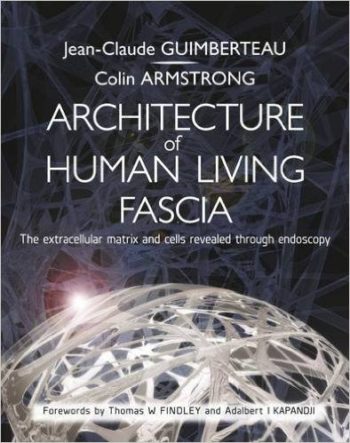I am so over the word ‘fascia’. I have touted it for 40 years – I was even called the ‘Father of Fascia’ the other day in New York (it was meant kindly, but…) — now that ‘fascia’ has become a buzzword and is being used for everything and anything, I am pulling back from it in top-speed reverse. Fascia is important, of course, and folks need to understand its implications for biomechanics, but it is not a panacea, the answer to all questions, and it doesn’t do half the things even some of my friends say it does.
So let’s talk about ‘biomechanical auto-regulation’, which is a concept bigger than ‘fascia’. How do we build, maintain and adjust our bodies to meet the mechanical needs of gravity and the other forces that come in from the outside, as well as the forces we generate inside with our muscles? (And of course it all has to work thermodynamically – to maintain temperature – and hydrodynamically – everything needs to be wet – as well.)
Compounding the problem – but also the key to its understanding – is that it all has to be built cell by cell. You are somewhere around 100 trillion cells somehow working together to produce the event called you. It’s a bleedin’ miracle.
Read this:
http://phys.org/news/2015-11-method-reveals-cells-tissue-stiffness.html
Up until recently, we were satisfied with the ‘muscles attach to tendons that cross joints between bones to produce movement (or stop it), limited by the length and strength of the muscle, its attachments, the shapes of the bones, and the limiting ligaments’ – something like that was the working theory.
Adding the extra-cellular matrix to the mix certainly produced some interesting new insights, many of which have been shown in the Fascial Research Congresses since 2007. Like:
• Muscles attach to the muscles beside them via areolar ‘fuzz’ and inter muscular septa that transmit significant force and allow the body to be much more efficient than the ‘isolated muscle theory’ (origin – insertion – action) would predict. (Hiding et al)
• Muscles attach to and affect the tension in ligaments, allowing ligaments to stabilize joints at all angles of us. (Van der Wal)
• Hydraulic amplification is happening all over the body all the time.
And of course my favorite:
• Muscles transmit beyond their attachments via the fascial fabric to structures both proximal and distal. (Myers, Vleeming, Franklin-Miller, et al)
But below this macro-level of organismic or regional biomechanics is the underlying question of how cells – which are of course the actual engines of life – assess and respond to mechanical forces. How are the cells you are sitting on avoiding rupture? How will they adapt to the new stress when you stand up? What’s the mechanical component of cancer (exciting new arena)? How do we repair a strain, a wound, a break at the cellular level?
A lot is known, but much remains unknown, as this article admits at the beginning. What is known, and what is so exciting in this new world for both manual therapists and movement teachers is that the cells are ‘listening’ intently to what’s going on around them on a mechanical level (as well as the chemistry around them of course) and responding in a variety of ways.
Cells need to be in their mechanical ‘happy place’ to function. Too crowded can produce cell suicide; too stretched can stimulate reproduction, and every cell has a ‘Goldilocks’ tension – different for different cells – where they function happily. Organismic movement and stretching – yoga, pilates, training, manual therapy – can help cells to their proper tension environment by relieving pressure or strain, and this results in better functioning all over. Why should yoga help digestive problems, or some of my bodywork clients report increased regularity of their periods? This points the way.
If this interests you, you can follow the lead of this article, which links to others, read the first chapter of the Anatomy Trains book, follow the work of Donald Ingber, or get Guimberteau’s new book, available on our site.
Recommended
Architecture of Human Living Fascia
$74.95Architecture of Human Living Fascia summarizes 20 years of Dr. Gimberteau’s research. This widely anticipated book is richly illustrated and includes a HD DVD.
Read more





